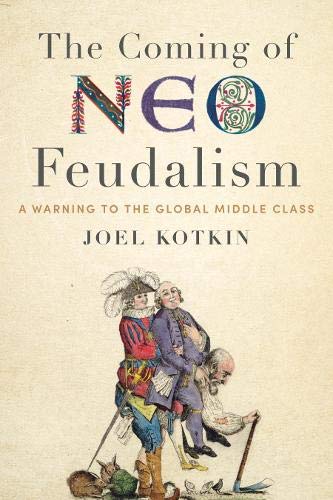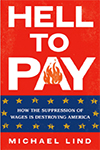NewGeography.com blogs
Today the US Bureau of the Census released a fascinating report on metropolitan area population growth by radius from the corresponding city halls. The report provides summary tables indicating the metropolitan areas that had the greatest and least growth, for example, near the downtown areas. I was surprised to find that Salt Lake City had done so well, having seen is population rise from 336,000 to 355,000 within a two mile radius of city hall (Table 3-7). That struck me as odd. A two mile radius encompasses an area of only 12.6 square miles, for a density of about 28,000 per square mile. Only the city San Francisco has densities that high over such a large area in the West. Moreover, all of the municipality of Salt Lake City is within two miles of city hall, and the 2010 census counted only 186,000 people in the entire city of more nearly 110 square miles.
In reviewing the backup file, Worksheets "Pop2000", Pop2010", "Density2000" and "Density 2010"), I discovered that Salt Lake City's data was actually that of San Francisco and that metropolitan Salt Lake City was credited with 3.2 more people than it had Another surprise was that the San Francisco metropolitan area was reported with 260,000 people, less than one-third the population reported for the core city of San Francisco in 2010. Santa Fe had a reported population 3.4 million people, about 1.4 million people more than live in the entire state of which it is the capital. Further, in at least 35 cases, the populations for metropolitan areas did not correspond to those reported in the 2010 census.
Obviously this is the kind of automated (computer) error that can happen to anyone or any agency. Nonetheless, an immediate correction would be appropriate.
With considerable effort, we were able to get through to the public information office at the Bureau of the Census to notify them of the error.
Until a corrected report is issued, any analysis of the report will need to be very cautious indeed. We look forward to the revision.
With California State Redevelopment Agency money gone, the city of Los Angeles ought to welcome new large-scale private development, and the economic stimulus and job creation it brings, with open arms. City Hall, faced with an anemic municipal budget, could also use the increased tax revenue. One such project that would help abate the city’s budget woes and create new jobs for the city is the University of Southern California’s proposed $1.1 billion “The Village at USC” project.
Surprisingly (or perhaps not), the city’s Planning and Land Use Management Committee delayed approval of the project for the second time last week, citing a need for more time to digest data regarding the project’s gentrifying effects on the surrounding community. The city is not fooling anyone – the delay amounts to nothing short of extortion – an attempt to ensure that committee members receive their proper concessions.
The site for “The Village at USC” is located directly north of the campus on University-owned land. Currently a dilapidated retail center, the new project calls 350,000 square feet of retail and will add up to 5,200 much needed student beds. The project would also create 12,000 new jobs for the city (8,000 permanent and 4,000 construction-related).
Comprehending the short-sightedness of delaying the project requires an understanding of USC’s role in its surrounding neighborhood (full disclosure: this writer is a graduate of USC). The university was founded in 1880, when LA was nothing more than a far outpost of western American expansion. Situated just 2 miles south of downtown, the city grew outward around the campus. Once an upscale neighborhood, the area immediately adjacent to USC lost its luster with the development of the city’s Westside, including Hollywood and Beverly Hills. Post WWII suburban expansion and the construction of the 110 and 10 freeways further eroded the area.
Today the area surrounding USC’s campus is racially and economically polarized. Part of LA’s notorious South Central (now more politically correct referred to as “South LA”), the area was hard hit by the riots of 1992. Yet while crime is still an issue, the area has markedly improved since the riots. Much of the improvement is thanks to a shift in the University’s relationship to its surrounding neighborhood post-1992. Rather than continuing to see itself as an island fortress in a sea of urban chaos, USC reached out to the local community, sponsoring programs for community members and supporting local businesses. The University’s extensive community outreach efforts led it to be named TIME magazine’s “University of the Year” in 2000.
As Los Angeles developed, USC had several opportunities to relocate its campus to other parts of the city and even Orange County, but its commitment to staying in the city’s center stood the test of time. The University is the largest private employer in Los Angeles and serves as a wellspring of knowledge and talent for the city. Given these contributions to LA, it is unfortunate and even appalling that the city’s Planning and Land Use Management Committee would question the University’s intentions and delay its plans to develop on land it owns with its own money (and without any handouts from the city or state).
Adam Nathaniel Mayer is an American architectural design professional. In addition to his job designing buildings he writes the China Urban Development Blog. Follow him on Twitter: @AdamNMayer.
The Census Bureau's American Community Survey released its annual one-year snapshot of demographic data in the United States. As usual, this included journey to work (commuting data), which is summarized in the table below.
| American Community Survey Commuting Data |
| 2011, 2010 & 2000 |
|
|
|
| ESTIMATES of Total Commuters |
2000 |
2010 |
2011 |
| Drive Alone |
97.10 |
104.86 |
105.64 |
| Car/Van Pool |
15.63 |
13.27 |
13.39 |
| Transit |
5.87 |
6.77 |
6.96 |
| Bicycle |
0.49 |
0.73 |
0.78 |
| Walk |
3.76 |
3.80 |
3.89 |
| Motorcyle, Taxi & Other |
1.24 |
1.60 |
1.63 |
| Work at Home |
4.18 |
5.92 |
5.99 |
| Total |
128.28 |
136.94 |
138.27 |
| In Millions |
|
|
|
|
|
|
|
| MARKET SHARE |
|
|
|
| Drive Alone |
75.70% |
76.57% |
76.40% |
| Car/Van Pool |
12.19% |
9.69% |
9.68% |
| Transit |
4.57% |
4.94% |
5.03% |
| Bicycle |
0.38% |
0.53% |
0.56% |
| Walk |
2.93% |
2.77% |
2.81% |
| Motorcyle, Taxi & Other |
0.97% |
1.17% |
1.18% |
| Work at Home |
3.26% |
4.33% |
4.34% |
| Total |
100.00% |
100.00% |
100.00% |
|
|
|
|
| Sources: 2000, 2010 Census & 2011 American Community Survey |
Trends Since 2010
As estimated employment improved from 137.9 million in 2010 to 138.3 from 2010 to 2011, there was an increase of 800,000 in the number of commuters driving alone, which, as usual, represented the vast majority of commuting (105.6 million daily one way trips), at 76.40 percent. This was not enough, however, to avoid a small (0.17 percentage point) decline in market share.
Car pooling experienced a rare increase of 120,000 commuters, which translated into a 0.1 percentage point loss in market share, to 9.68 percent. Transit increased 190,000 commuters, and had a 0.09 percentage point increase in market share, to 5.03 percent. This brought transit's market share to above its 2008 share of 5.01 percent and near its 1990 market share of 5.11 percent.
Working at home increased by 70,000, with a modest 0.1 percentage point increase from 2010.
Trends Since 2000
Even with declining falling household incomes and rising gasoline prices, single-occupant commuting continued to rise between 2000 and 2011. Solo drivers increased nearly 8 million, more than the total transit commuting in 2011. Car pooling continued its long-term decline, falling 2.2 million. Transit did well (as would be expected with unfavorable economic conditions and unprecedented gasoline price increases), as we noted last year, having added 1.1 million commuters. This was spread thinly around the country, though with a 70 percent concentration in New York and Washington, DC. Over the period, working at home experienced an increase of 1.8 million, the largest increase outside solo driving.
Media Attention
For the most part the commuting data was ignored by the media --- and for good reason. The one year changes were predictably modest. However, the exception was USA Today, with a top of the webpage "Fewer Americans Driving Solo" headline. In fact, as noted above, the short term and long term trends reflected an increase in solo driving. Moreover, reading the story it would be easy to get the impression that a sea change had occurred in how people get to work. To its credit, however, USA Today appropriately labeled the likely reasons for the mountains it made into molehills --- the economy and gasoline prices.
by Anonymous 09/12/2012
The Democratic Party in Chicago is at war. The one party town is seeing an important element of the coalition on strike. Rahm Emanuel is at war with a real adversary: teacher’s union boss Karen Lewis. Last year Lewis began laying the groundwork for a strike as witnessed in this Chicago Magazine interview with reporter Carol Felsenthal:
CF: So you have an issue with [Secretary of Education, former CPS CEO] Arne Duncan?
KL:Yeah, because he has a bachelor’s in sociology from Harvard and played basketball [he’s an education expert]? I think he’s completely and totally unqualified to do this job. And to me, it’s sort of indicative of how education is such a political tool now, as opposed to [his] having a real bent toward education. I think this is a way for Obama to try to make an olive branch with Republicans. There’s this mentality that outsiders and people with no education background are the… experts…. They want to privatize public education…. Arne’s policies here were a disaster.
Karen Lewis, like Rahm Emanuel, isn’t shy about expressing her opinions. Conflict is in the air. For 25,000 teachers to be on strike weeks before a Presidential election is a major problem for Barack Obama and Rahm Emanuel. Karen Lewis has even organized children to chant slogans against Rahm Emanuel. As veteran Chicago reporter Greg Hinz has said:
Mr. Emanuel has loudly declared what he wants, issued his demands in what I hear was an f-bomb-filled meeting with Ms. Lewis, and moved to impose some items by fiat — i.e., enacting a longer school day and directing the board to rescind a negotiated 4 percent pay hike.
Chicago is running out of money. There’s much blame to go around. The financial math is a threat to the status quo. The public school system has been a lucrative racket for some. Chicago Tribune columnist John Kass explains:
Unfortunately, the system works just fine. It works for the teachers union that wins the big raises (the current offer: a 16 percent bump over the next four years) and for the bureaucrats who are creatures of patronage, and for the vendors who feed from the almost $6 billion budget.
It works for Democratic politicians. They increase property taxes to pay for union raises and, in exchange, receive union support and political donations in election years. It's been going on that way for years.
But does it work for the kids? Not when nearly half don't graduate.
As New Geography readers remember, we warned that Chicago was on the downswing. The 2010 Census confirmed this decline. The difficult part of decline is the hardship that comes with layoffs. University of Chicago Professor Tim Knowles says 5000 Chicago Public School teachers could lose their jobs because of 100 schools may shut. When you lose 6.9% of your population in 10 years, closures are inevitable.
In conclusion, Karen Lewis has picked a perfect time to strike: right before a Presidential election. The Democratic party needs all the help it can get from unions to get out the vote in nearby battleground states. What if they don’t get out the vote in Ohio and other unions strongholds in November?
In a recent Evolving Urban Form article, we speculated that Tokyo, the world's largest urban area (population more than 35 million) could be displaced by fast-growing Jakarta or Delhi as early as 2030. If the prediction of central jurisdiction administrators and academics come true, Tokyo could be passed by many other urban areas in population by 2100.
The Japan Times reports forecasts that the population of the Prefecture of Tokyo, the central jurisdiction of the metropolitan area, could decline by nearly 50 percent (chart) between 2010 and 2100 (Note). Yet, while the overall population is dropping in half, the elderly population would increase by more than 20 percent. The resulting far less favorable ratio of elderly to the working population would present unprecedented social and economic challenges.
The article provides no information on the population of the entire urban area in 2100. The Prefecture of Tokyo constitutes somewhat over one third of the present population of the urban area.
During the last census period (between 2005 2010) the four prefecture Tokyo metropolitan area (Tokyo, Kanagawa, Saitama and Chiba), gained approximately 1,100,000 new residents, while the balance of the country was losing 1,400,000 residents. Japan is forecast to suffer substantial population losses in the decades to come. The United Nations forecasts that its population will decline from approximately 125 million in 2010 to 90 million in 2100. This is the optimistic scenario. The National Institute of Population and Social Security Research forecasts a drop to under 50 million, a more than 60 percent population reduction.
There are serious concerns about the projected population decline. According to the Japan Times, the researchers said that " ... it will be crucial to take measures to turn around the falling birthrate and enhance social security measures for the elderly," A professor the National Graduate Institute for Policy Studies, expressed concern that "If the economies of developing countries continue growing, the international competitiveness of major companies in Tokyo will dive."
----
Note: the Prefecture of Tokyo government is called the Tokyo Metropolitan Government. This term can mislead, because the prefecture itself is not the metropolitan area, but only part of the four prefecture metropolitan area. The pre-– amalgamation predecessor of the current city of Toronto was called the Municipality of Metropolitan Toronto. Like the Prefecture of Tokyo, the Municipality of Metropolitan Toronto comprised only part of the Toronto metropolitan area. Confusion over these terms not only resulted in incorrect press reports, but even misled some academic researchers to treat these sub-metropolitan jurisdictions as metropolitan areas.
|












